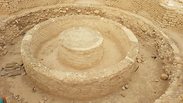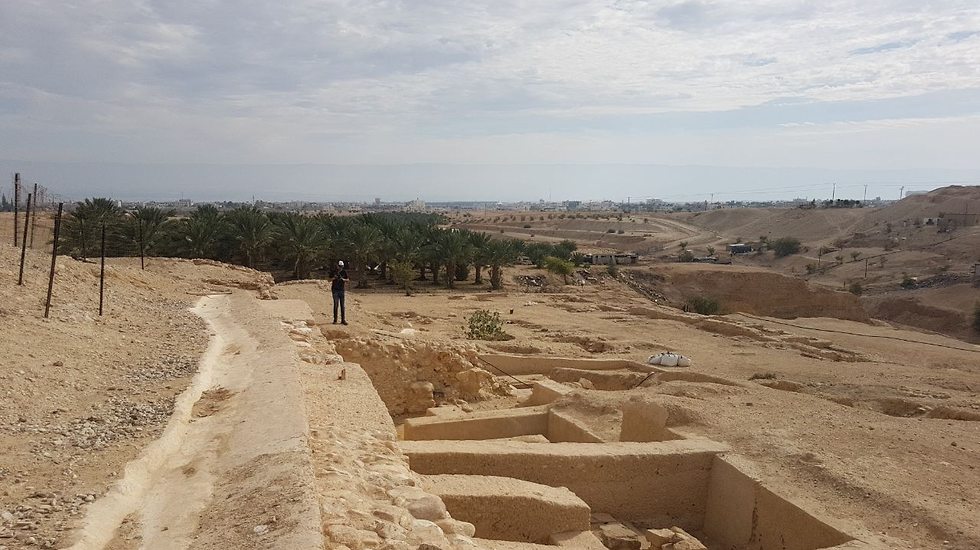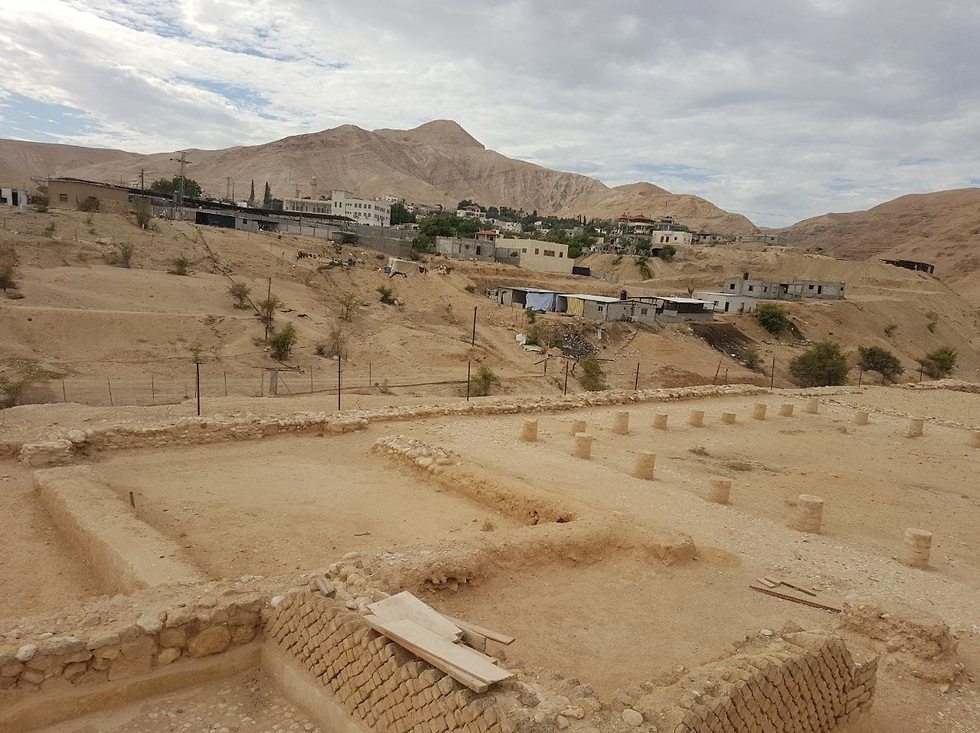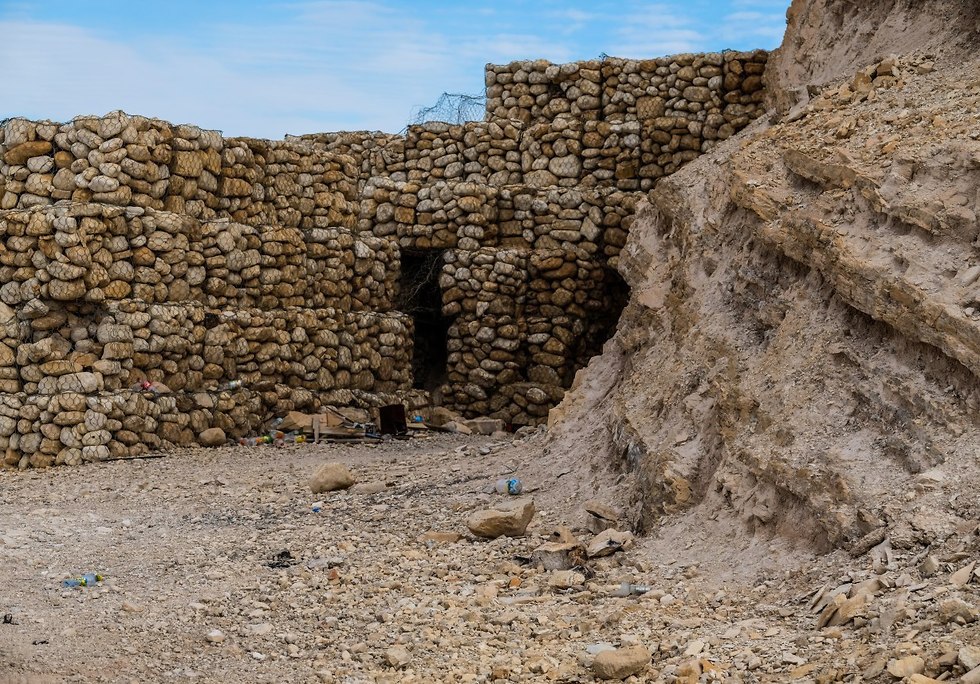
A trip to the Hasmonean palaces at heart of the Judean Desert
Luxurious palaces from the Second Temple Period and an ancient political murder that ended the Hasmonean priest line: a visit to the Hasmonean royal winter palaces brings the desert stones to life.
Adjacent to the city of Jericho sits one of Israel’s most intriguing archaeological sites. Luxurious palaces, Mikvehs and water storing facilities: all of these can be found in the Hasmonean royal winter palaces, built by the grandchildren and great grandchildren of the Hanukkah hero, priest Mattathias.
The palaces are located in Wadi Qelt, partially within Area A, under Palestinian Authority. Entrance is prohibited without coordination with the IDF.
We approached the site in a four-wheel drive, going east from the Saint George monastery on an enchanting and bumpy road. Along route we see other Hasmonean structures, fortifications and water facilities. These were all renovated by King Herod and dismantled by Jewish extremists during the Great Revolt, in the first Century CE.
“During the Second Temple Period, Jericho was a very important city, both from a financial-agricultural and a political standpoint,” said Yair Elmakias, head of the Samaria touring and education center. “It ruled the ancient trade path that connected the eastern Jordan bank region to Jerusalem. This strategic importance made the descendants of the Hasmoneans choose this place for their winter palaces.”
Just by entering the site, its ancient gandour is evident. These Second Temple palaces include swimming pools, bath houses, gardens and fruit tree plantations, all excavated during the 19th Century by British archaeologist Charles Warren. All findings point to the hedonistic lifestyle of the priest's offsprings.
“We’re talking about the third and fourth generation after Mattathias,” explained Ariel Filber, head of the Society for the Protection of Nature in Israel Ofra Field-School. “Most of the construction here was done during the reign of Alexander Jannaeus and his wife Salome Alexandra. After their reign, the Judean Kingdom started to collapse, and Herod gradually took over.”
Some of the most famous discoveries here were made by the late Ehud Netzer in his 1973 excavation; he exposed the elaborate and innovative aqueduct that led freshwater to pools and Mikvehs that lay between palaces.
The site consists of clusters of remains from both sides of Wadi Qelt, and the ruins of a bridge that connected the two sides.
It’s also a murder scene, from 36 BCE: “Herod married a Hasmonean wife, and was really fearful of political enemies. He became suspicious of his wife’s brother, the 17-year-old Aristobulus III, and had his slaves drown the boy here,” explained Filber.
Elmakias stresses the importance of this murder: “It was a political murder that ended the line of Hasmonean priests. Aristobulus III was the last one, and was very much loved by the people, who hated Herod.”
“He was drowned right here,” Elmakias points out the spot, “Herod’s slaves gave him wine to drink, then Herod gave them the sign and they drowned him—ending the long line of Hasmoneans.”
From there we continue to the remnants of Herod’s palace, where he received his guests, and also saw the end of his life. A grand plaza surrounded by decorated pillar bases is revealed, right on the edge of the view. The marble floor, brought here all the way from Italy, survived to this day. The walls didn’t, but some of the plaster on the luxurious pool gives us a taste of the kind of lifestyle Herod enjoyed.
“I see the Hasmoneans as inspiring figures from our past, that gave an example to future generations,” said Elmakias.
Filber added, “today Jews celebrate Hanukkah as a national rather than a religious holiday—a holiday that tells us of the Hasmonean heritage of a struggle for autonomy, national pride and Jewish independence in Israel.”
“Over the last two years, there have been a lot of efforts to restore the site and make it accessible to the public,” said Minister of Jerusalem Affairs Ze'ev Elkin (Likud).
“Unfortunately, accessibility is still limited since some of the road to the site travels through an area that is under the Palestinian Authority’s rule, requiring visitors to coordinate their visit with security forces. We are working on a new road that will go through Area C territories and will allow free access to this important site,” Elkin added.
It’s important to stress that visiting this archaeological site is prohibited and dangerous without security coordination with the IDF. “During holidays and when there’s demand, we work to attach security personnel to tours in the Hasmonean site,” said Ilan Marendich, of the Jordan Rift Valley Brigade.














